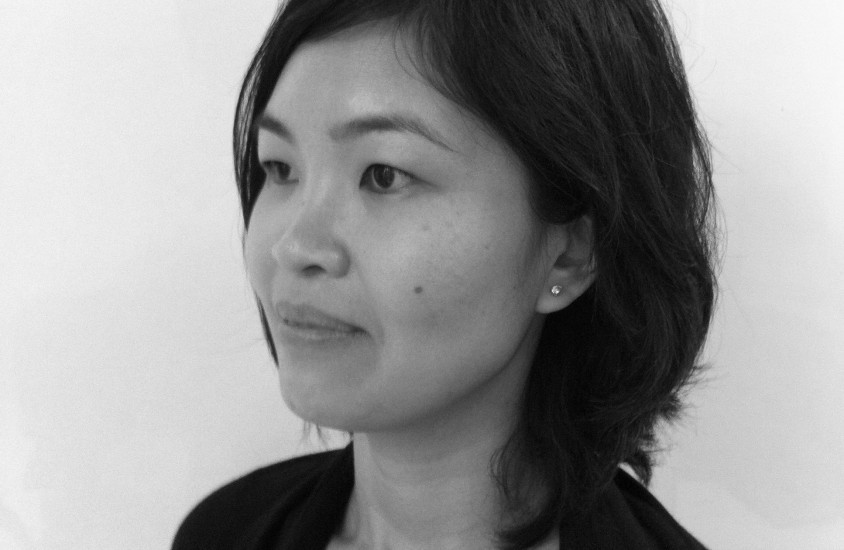2015 UQ Architecture Series with Eunice Seng, SKEW Collaborative (China)
By administrator | 28 April 2015
In the lead-up to the final lecture in the 2015 UQ Architecture Lecture Series, May 5, we spoke to speaker Eunice Seng, SKEW Collaborative (China).

Tell us a little about your background, and what originally led you to architecture?
I stumbled upon architecture and it was by elimination that I ended up studying it. After high school in Singapore, I was deciding between studying Geography in the UK or something else that is more clearly “professional” as a discipline. Being an arts and humanities major, Architecture seemed an interesting option and aroused my curiosity from the moment I began my study. My graduate study at Princeton was a transformative time in terms of its influence on my thinking of architecture. Koon, Darren and I met at different junctures in our architectural study. Koon and I collaborated on our first architectural exhibition in Singapore in 2000 where we met Darren. In the early to mid-2000s, we worked together with Darren and a previous partner I-Shin Chow, on various exhibitions and projects when we were all in New York City. SKEW was set up during this time and it was also then that I embarked on my PhD study a Columbia which proved to be influential in shaping my role in our practice. A number of dwelling projects and academic opportunities brought us to Shanghai and Hong Kong where we continue to develop a practice deeply entangled with academia.
Can you give us a little insight into what a normal work day looks like for you?
There is no normal workday! Depending on whether we are in Hong Kong or Shanghai, a workday entails endless work sessions with the research or design teams and intense discussions (often debates) with my two partners, Koon and Darren; and sketches and mark ups, and more discussions over the mark ups… As the director of research, I have the enviable task of carving out space amidst the burdens of the daily management of projects for the reflection of processes through deeper analysis of artefacts.
What are some daily office rituals or habits you employ to enhance your productivity and creativity?
A hearty breakfast, often involving a meeting with one or both partners, followed by more intellectual work (writing, conceptualizing, team brainstorming…) in the first hours of the morning.
What principles inform your work?
These would be 1. ceaseless questioning and problematizing, 2. consciousness of the histories surrounding a project, and 3. identification of the various stakes involved, including those with no “voice” and the invisible users; 4. Starting each project with research in an artefact that renders visible the processes producing it.
Where do you go to get design inspiration?
The city, the team, history and the vicissitudes of everyday life. The mess, noise, perpetual and intense development that underpins the metropolitan condition of the dense Asian cities – our fields of operation in the last decade – is fertile ground for feeding our curiosity and investigative mode of practice.
What has been a career highlight for you so far?
I am motivated by many things/events, many of which I consider career milestones or highlights in the sense that each reinforces the evolving ideas driving our practice: the completion of our first exhibition installation in Singapore and our first video piece at the Venice Biennale (2004), the first essays on artefacts as design method (2009), the first rooftop house in Shanghai (2010), first ground-up building in Shanghai, PRC (2011) and the first design award for it (2012).
Which Australian or international architecture people, practices, designers or similar do you admire?
Kenneth Frampton and Alan Colquhoun, for their sharp cogent observations on modern architecture and the built environment; Robin Evans for his analytical takes on architecture and society; Diller+Scofidio and Renfro for making complexities and contradictions the basis of their work; Rem Koolhaas for his ability to command the imagination of a generation of architects and architectural students through his didactic observations on the contemporary and invocation of the historical; The Atlas Group for their visual methodologies involving narratives of the everyday and the archive, Atelier Bow Wow for reinvoking the axonometric to narrate the urban architectural history of Tokyo and the Japanese city; Kazuo Seijima, for ushering a practice in a male-dominated professional environment; and Enric Miralles, for his stimulating visuals, even when it is simply the documentation of a site. The installations of Walter Pichler, the representations/drawings of Morphosis, Bernard Tschumi, Lebbeus Woods and Perry Kulper; the shows put up at the Storefront for Art and Architecture, especially in the last decade… The list is getting quite extensive so I shall stop here.
What are your top 5 favourite design books?
My/our idea of what constitutes a design book is expansive, possibly unorthodox:
- Atelier Bow Wow, Behaviorology (2010)
- Mike Davis, Dead Cities, and other Tales (New Press, 2002)
- Diller+Scofidio, Flesh: Architectural Probes (Princeton Architectural Press, 1996)
- Rem Koolhaas, Delirious New York: A Retroactive Manifesto for Manhattan (Oxford University Press, 1978)
- Henri Lefebvre, The Production of Space (Blackwell, 1991)
Stories. And the challenges of and attempts at developing a design practice and pedagogy based on contested notions of aesthetics and ethics within the fast-changing contexts of the Asian metropolis.
Date: Tuesday 5 May
Time: 6:00pm for a 6:30pm start – 7:30pm
Where: Auditorium 1, level 2, State Library of Queensland
Register: Eventbrite
Architectural professionals who attend the series will be eligible for 2 formal continuing professional development points (CPD).
2015 UQ Architecture Series is presented by the University of Queensland School of Architecture and the Asia Pacific Design Library.
Comments
Your email address will not be published.
We welcome relevant, respectful comments.